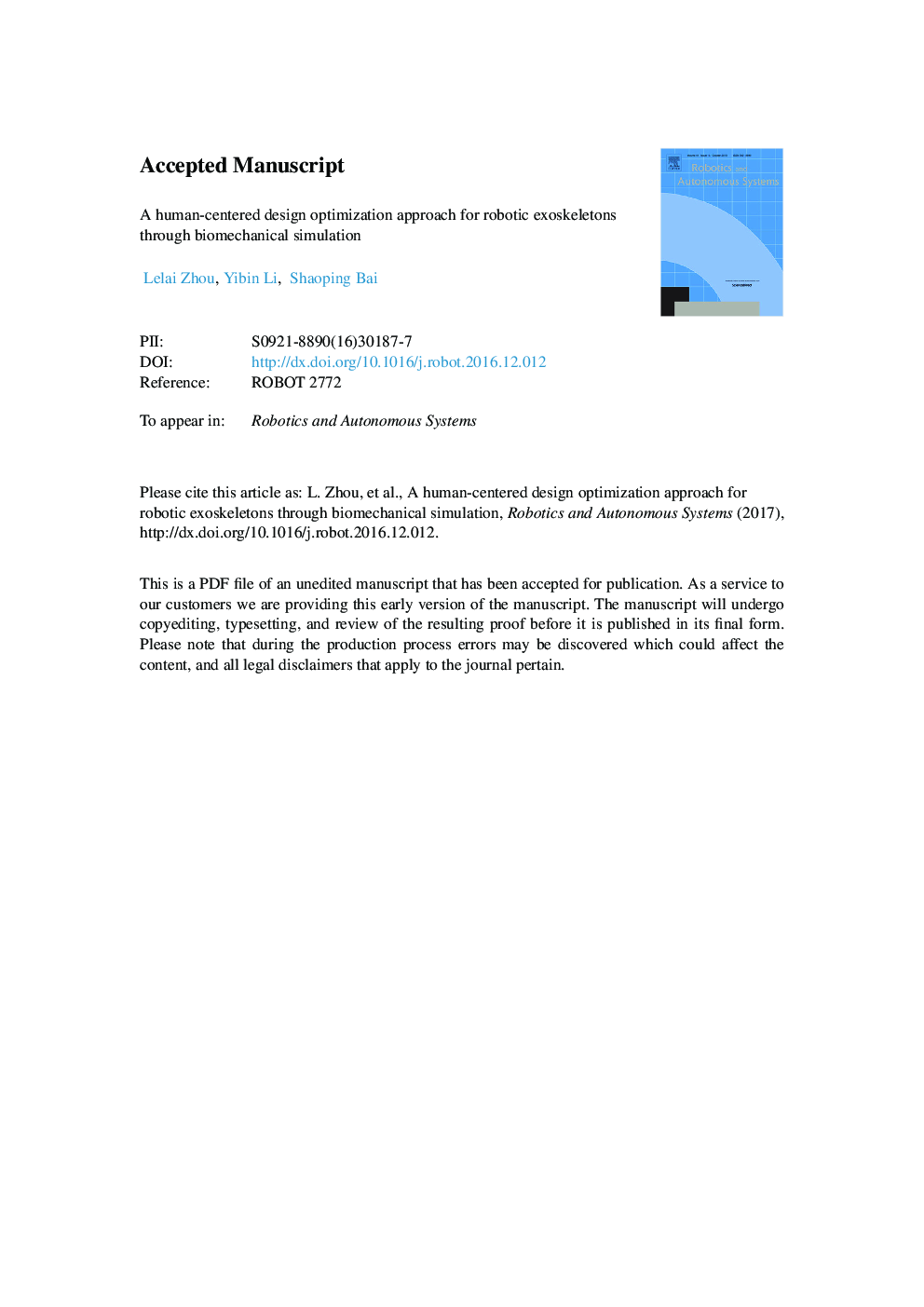| Article ID | Journal | Published Year | Pages | File Type |
|---|---|---|---|---|
| 4948804 | Robotics and Autonomous Systems | 2017 | 32 Pages |
Abstract
A design optimization approach for exoskeletons on the basis of simulation of the exoskeleton and a human body model is proposed in this paper. The human-centered approach, addressing the problem of physical human-exoskeleton interactions, models and simulates the mechanics for the exoskeleton and the human body in concern. It allows designers to efficiently analyze and evaluate exoskeleton functions. A simulation platform is developed by integrating a musculoskeletal human body and an exoskeleton. An assistive exoskeleton for the symptom of brachial plexus injury is simulated and analyzed. Two types of passive exoskeletons with gravity-compensating capability are evaluated, and the optimal spring stiffnesses are obtained. The design analysis and optimization results demonstrate the effectiveness of the approach.
Keywords
Related Topics
Physical Sciences and Engineering
Computer Science
Artificial Intelligence
Authors
Lelai Zhou, Yibin Li, Shaoping Bai,
